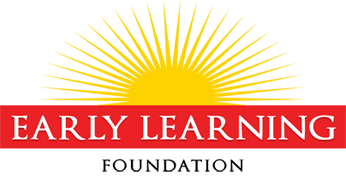Competency Based Learning
Competency Based Learning 
Competency based learning is focused on student learning outcomes and is built with the following design principles in mind:
- Students advance upon mastery, not age.
- The pathway to competency is built with explicit and measurable learning objectives.
- Assessment is primarily formative, and skills or concepts are assessed in multiple contexts to guarantee both deep understanding and application.
It all starts with clear learning goals. With a small set of clearly defined crucial outcomes, or a clear pathway to competency, and a goal of competency for every child, teachers work within a different system designed to produce far more competent learners. Clear learning goals provide the objective toward which we will work until the job is done.
In the competency model, students are not passed along with significant gaps in understanding which cause them to fall further and further behind. For the identified crucial learning outcomes, instruction is designed to match the developmental readiness of the students, so that they are engaged and challenged but not frustrated. Students advance upon mastery to higher levels of skill and challenge.
Pre-K to Grade 3 Essential Skills Inventories, Information Packet
The PreK-3 Essential Skill Inventories are tools for systematically measuring progress toward the most crucial skills in the development of:
- Language
- Literacy
- Number sense
- Visual motor skills
- Gross motor skills
- Behavior and self-care skills
The inventories serve as an ongoing formative assessment tool, regularly updated by the teacher, so you can identify specifically what students know and what they are ready to learn. These skills are the core skills which cannot be merely “covered.” These are the skills we must ensure students learn to a level of deep understanding and application. These are the foundation skills upon which a lifetime of learning will be built.
Books on Competency Based Learning
Bob Sornson, our founder, has worked internationally with schools and universities to develop high-quality competency-based learning initiatives at every level. He has published books and many articles on competency-based learning:
1. Brainless Sameness: The Demise of One-Size-Fits-All Instruction and the Rise of Competency-Based Learning
- Description: This manifesto calls for change to a system that crushes students who don’t fit into the same-for-all curriculum delivery system.
- Key Points: Advocates for a shift towards competency-based learning to accommodate diverse student needs.
2. Over-Tested and Under-Prepared: Using Competency-Based Learning to Transform Our Schools
- Description: A step-by-step guide for districts, universities, and organizations trying to develop effective competency-based learning systems.
- Key Points: Provides practical strategies for implementing competency-based learning to improve student outcomes and educational experiences.
3. Fanatically Formative
- Description: Explores the application of competency-based learning in the elementary school years.
- Key Points: Offers insights and examples of how competency-based approaches can be effectively utilized in early education settings.
4. Essential Math Skills
- Description: Offers a simple framework for early math skills, in sequence, with many activities for each skill that bring math learning alive.
- Key Points: Provides educators with practical tools and activities to teach fundamental math skills in engaging ways.

Special Projects and Research
Simpson Central School, Pinola, MS:
This rural school of about 500 students is a Title 1 school serving 20 small surrounding communities, with over 75% eligibility for free or reduced lunch, and a student population of 52% Caucasian and 48% African American. The school historically demonstrated over 60% of students performing below grade level in reading at the end of third grade, and special education rates above state and national averages. After learning to use the Essential Skill Inventories as a competency framework, and to consistently personalize instruction to help each child build essential skills, proficiency rates on grade 3 state achievement tests increased from 37% in literacy to over 85%, and from 59% in math to over 90% proficiency. This previously struggling school became an “A” rated school of excellence, in spite of high rates of family poverty.
Corinth-Alcorn-Prentiss Learning Collaborative, MS:
At the beginning of the 2015-16 school year, preschool students in the Corinth-Alcorn-Prentiss Learning Collaborative were tested using the Star Early Literacy assessment as part of a state-wide assessment process. Only 20.1% of these children scored at or above a standard score of 498, the level associated with readiness for Kindergarten entry. Staff was given training in the use of the Preschool Essential Skill Inventories and learned to monitor progress weekly, and know their students’ learning needs more precisely.
By the end of the year, more than 85% of the students showed the literacy skills for K readiness. This pattern of growth gave this collaborative in Northeast Mississippi the highest rate of kindergarten literacy readiness in the state, along with the second highest rate of scaled score improvement in the state.
